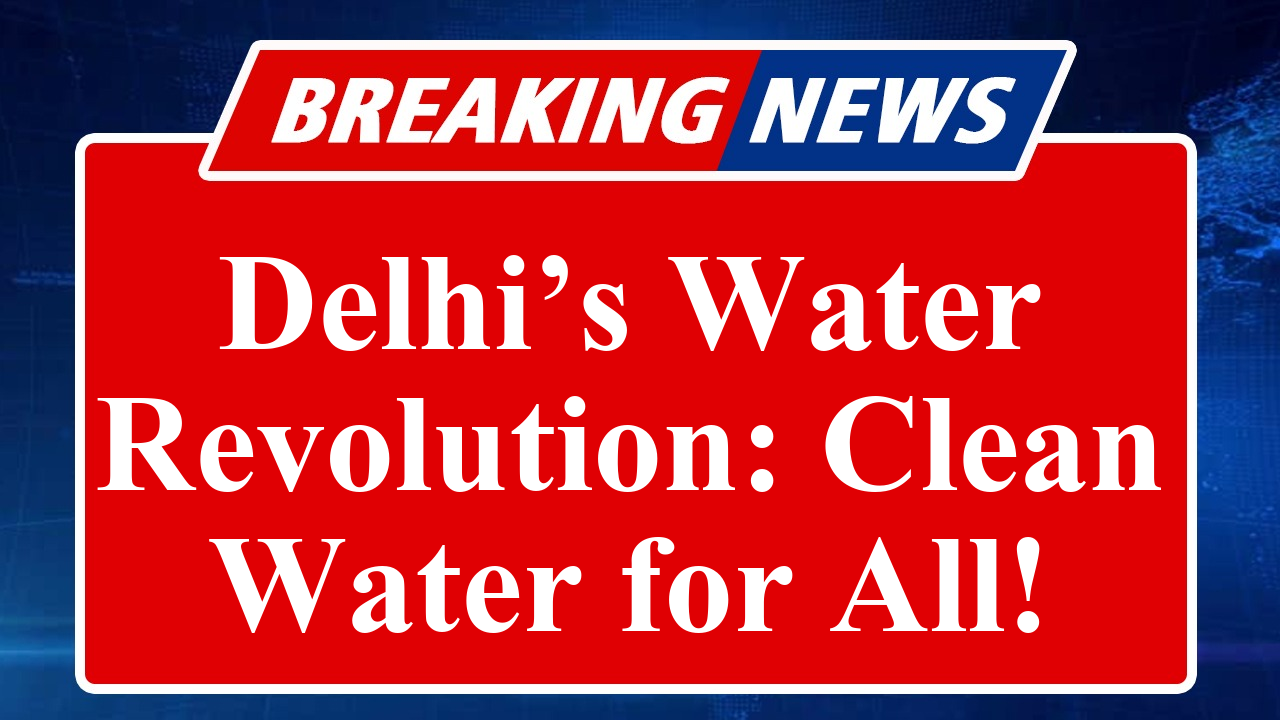“Delhi’s new water conservation initiative aims to ensure clean water access for every household through water ATMs, new treatment plants, and sustainable practices. The plan addresses the city’s water crisis with innovative solutions like treated wastewater reuse and community-driven conservation efforts.”
Delhi’s Bold Step Toward Universal Water Access
In a bid to tackle Delhi’s persistent water scarcity and contamination issues, the Delhi government, spearheaded by the Delhi Jal Board (DJB), has rolled out a comprehensive water conservation initiative titled “Water for Every Home.” Launched in June 2025, this ambitious program seeks to provide clean, accessible drinking water to every household while promoting sustainable water management practices across the capital.
A cornerstone of the initiative is the installation of water ATMs across public spaces, including schools, bus stops, and markets. On June 12, 2025, Water Minister Parvesh Verma inaugurated the first water ATM at Sarvodaya Kanya Vidyalaya in Daryaganj, marking the beginning of a pilot project to install 20 such units through Corporate Social Responsibility (CSR) initiatives. These standalone units, equipped with real-time water quality monitors and purification systems, aim to provide cold, clean drinking water to combat heat-related challenges. The DJB plans to scale this to 5,000 water ATMs citywide, ensuring broader access to potable water.
To address the city’s growing water demand, the DJB is constructing three new water treatment plants (WTPs) in Iradat Nagar (near Narela), Najafgarh, and Chhattarpur. Announced on June 9, 2025, these plants are expected to collectively supply an additional 235 million gallons per day (MGD) of treated water. The Iradat Nagar and Chhattarpur plants will each have a capacity of 80 MGD, while Najafgarh’s facility will contribute 75 MGD. This expansion aims to bridge the demand-supply gap, which has been exacerbated by contamination issues, as highlighted in the DJB’s 2023 Economic Survey, which noted only a 0.31% increase in treatment capacity from 2022 to 2023.
The initiative also emphasizes sustainable water management. On June 24, 2025, the DJB announced plans to release 1,200 million liters per day (MLD) of highly treated wastewater from three advanced sewage treatment plants (STPs) into the Yamuna River to restore its environmental flow. This move, bypassing open drains, aims to improve water quality and sustain the river’s ecological health, as the 22km stretch of the Yamuna in Delhi accounts for 76% of its total pollution. Additionally, the government is exploring the use of treated wastewater in construction projects to reduce groundwater extraction, following a 2024 Central Ground Water Board report indicating Delhi’s over-reliance on groundwater.
Community participation is another key focus. The initiative draws inspiration from the success of the Atal Bhujal Yojana, a national groundwater management scheme praised on June 30, 2025, for empowering local communities. Delhi’s program encourages residents to adopt water-efficient practices and participate in awareness campaigns. Chief Minister Rekha Gupta, during a DJB meeting on June 21, 2025, announced a large-scale public awareness drive to educate citizens on river conservation and pollution prevention, particularly targeting unauthorized colonies where water and sewer infrastructure is being upgraded by 2027.
However, challenges persist. Recent reports from July 2 and 3, 2025, highlight contamination issues in east Delhi, where residents in areas like Yojana Vihar and Anand Vihar have received potable water mixed with sewage. The Delhi High Court has directed the DJB to inspect and rectify these issues, emphasizing the urgency of ensuring clean water supply. Furthermore, water supply disruptions in north, central, and west Delhi due to low water levels at the Wazirabad barrage (668.70 feet against a normal of 674.50 feet) underscore the need for robust infrastructure upgrades.
The initiative also looks to historical solutions for modern problems. Experts have pointed to Delhi’s medieval stepwells, like Ugrasen ki Baoli, as potential models for water conservation. These structures, once vital for addressing water shortages, could be revived to complement modern efforts, according to conservationist Sohail Hashmi in a July 2, 2025, report.
By integrating technology, infrastructure development, and community engagement, Delhi’s “Water for Every Home” initiative aims to create a sustainable water ecosystem, ensuring every household has access to clean water while addressing the city’s environmental challenges.
Disclaimer: This article is based on recent news reports, official statements from the Delhi Jal Board, and government announcements. Information is sourced from credible outlets like The Hindu, Hindustan Times, Times of India, and Business Standard. Data and figures are accurate as of July 3, 2025, and subject to change as new developments emerge.

